When planning an extended hunting trip that will be far off the beaten path, and it’s just you and nature, you’ll more than likely spend some time checking all the boxes before heading out. You’ve taken the time to break down and clean the upper receiver and inspected the AR15 lower yourself. Check. You’ve remembered to pack plenty of food, water, cooking and eating utensils, and sufficient ammunition. Check.
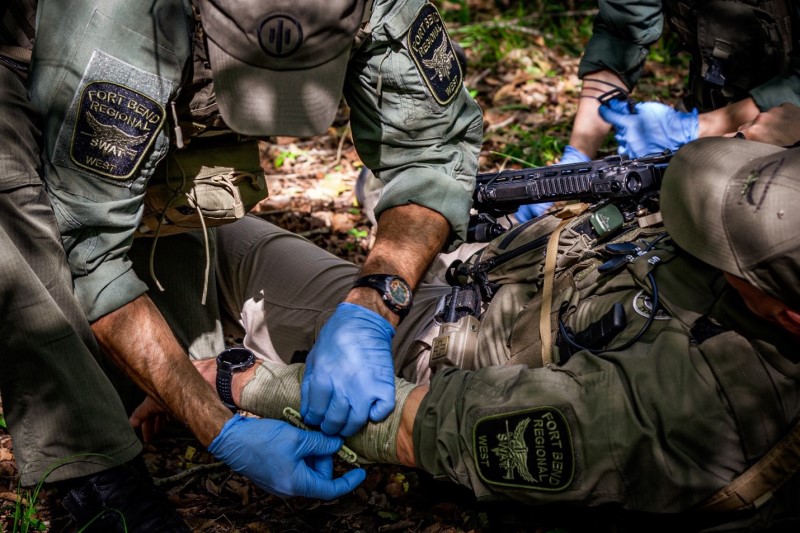
You probably will even perform a pre-check on your blaze orange and camouflaged clothing to ensure you’ll be comfortable and safe. Check. There is, however, one thing many hunters forget to check, and that’s a medical kit full of the correct supplies that might save either your own or someone else’s life. While thinking about bringing medical supplies typically means dwelling on negative and sometimes disastrous results that may happen, you should consider owning and including several of these items in your emergency medical kit, especially if you’re a gun owner.
1. Tourniquets
Although many hunters prefer not to acknowledge the fact that a situation could occur that should ever require one, a tourniquet is the most critical life-saving piece of equipment you’ll need in your medical kit. Battlefield lessons over the years have proven that proper application before the moment shock sets in can effectively save a life. While it may not be a gunshot wound that you or a member of your hunting crew experience, tourniquets can offset the adverse effects of blood loss caused by any penetrating accident.
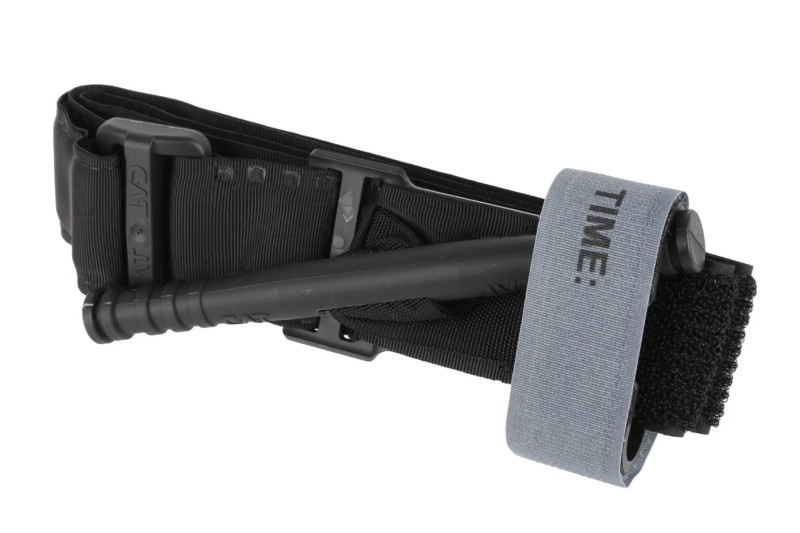
CAT or combat application tourniquets and SOFT-TW tourniquets are popular for military and law enforcement agencies. Although you can equip your medical supply kit with either, both require application expertise to stop significant or arterial bleeding. For the layperson who’s more concerned about bagging their first deer of the season, a SWAT-T wrap-style tourniquet is more intuitive and faster to apply.
When checking the market for a low-profile tourniquet that you can use easily, you’ll probably want to investigate a windlass-style tourniquet. Windlass-style tourniquets on the market today consist of a nylon belt with a stick or short pole to tighten with the twist of one hand. However, if you decide to practice applying the tourniquet before ever needing to use it, here’s a word of caution.
Most windlass-style tourniquets will expand or stretch after repeated practice sessions and render them ineffective should a real emergency happen. Whether it’s a windless tourniquet or two or three SWAT-T styles, you can check off the tourniquet box by stocking your medical supply kit with either.
[Editor’s note: A reader responded to me directly via email, and I thought his comments on the topic of tourniquets would be useful here. His response follows:
“Regarding tourniquets: yes, they can be life saving, but also very dangerous when used by the untrained and inexperienced. If they are left on too long they will cause loss of the limb. For that reason trauma dressings are #1 on my list. In a case of traumatic bleeding, the first intervention in most cases should be direct pressure to the wound, preferably with sterile bandages, otherwise with whatever you have on hand, like a folded up shirt (clean, for preference). Unless there is major arterial trauma, you can almost always get bleeding to stop with direct pressure without resorting to a tourniquet. Therefore, the first thing that goes in my trauma bag is a goodly supply of large sterile gauze pads. I also include Ace wraps to secure the pads in place over extremity wounds. For torso wounds someone will need to hold pressure manually, for as long as it takes. Elevate the injured part if possible and put an ice bag over the dressing (not on the skin). Once the bleeding is slowed enough you can tape torso dressings in place. My preference for that is plastic tape because it sticks well but also is removable without taking skin with it, unlike cloth tape. If you must use a tourniquet, apply it as close above the wound as possible to minimize the amount of uninjured limb exposed to ischemia. If you can’t get to expert care within an hour, loosen the tourniquet every twenty minutes or so to check the bleeding and give the limb some blood. Hold pressure on the wound while the tourniquet is loosened, peeking under the bandage to assess whether it’s bleeding enough to still need the tourniquet. Remove the tourniquet as soon as bleeding is controllable with direct pressure and apply bulk gauze and an ace wrap, not too tight. About half its maximum stretch is a good rule of thumb for safe tension of an Ace bandage.”]
2. Trauma Dressings
As mentioned earlier, most hunters prefer not to think about a traumatic event occurring to them or another hunting party member. However, accidents do happen, sometimes more severe than others, and when proper medical assistance is too far away for effective emergency response, you’ll need to react.
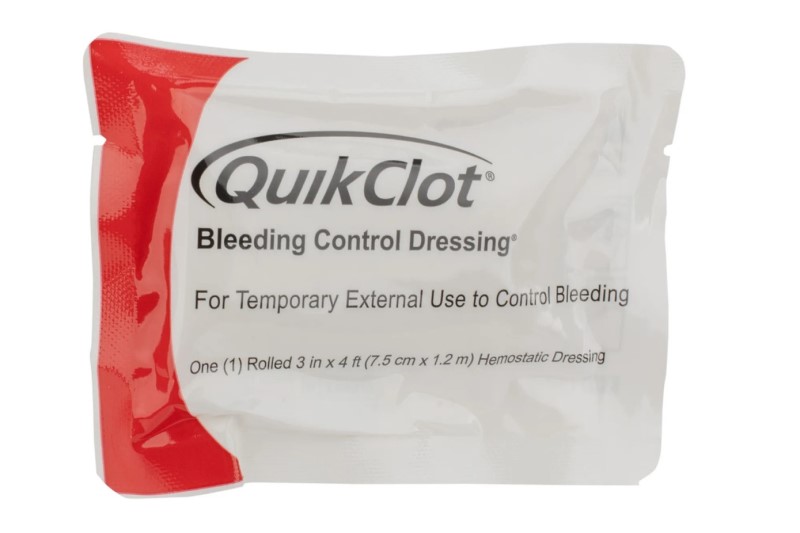
Suppose you haven’t found the time to stock your medical supply kit with hemostatic gauze that stops bleeding quicker with little application experience required. In that case, you’ll want at least to include a significant supply of conventional gauze, bandages, and wraps to fill the wound as much as possible and put sufficient pressure on the injury.
Remember that consistent pressure on a wound after initial treatment is critical when treating a severe bleeding injury. Not only will the pressure restrict bleeding to a large degree, but it also helps to keep the dressing in place when needing to move. One of the best types of trauma dressing on the market is the Israeli Bandage which combines a primary dressing and pressure application if conventional bandages aren’t available.
The Israeli Bandage includes a secondary dressing wrap and an easy-application closure apparatus to hold the dressing in place and maintain the proper pressure on the injury. If you can’t locate an Israeli Bandage, consider including alternative trauma dressings such as an Olaes Bandage in your medical supply kit. Olaes Bandages perform the same dressing treatment and restrict blood flow on a penetrating wound while maintaining sufficient pressure even when you remove your hands.
3. Shears or Cutters, and Gloves
A pair of shears or strap cutters may seem counterintuitive for many hunters that routinely carry pocketknives or longer blade knives when they hunt. However, shears and strap cutters are quicker and easier on the patient when you must cut gear straps or clothing away to access a wound.
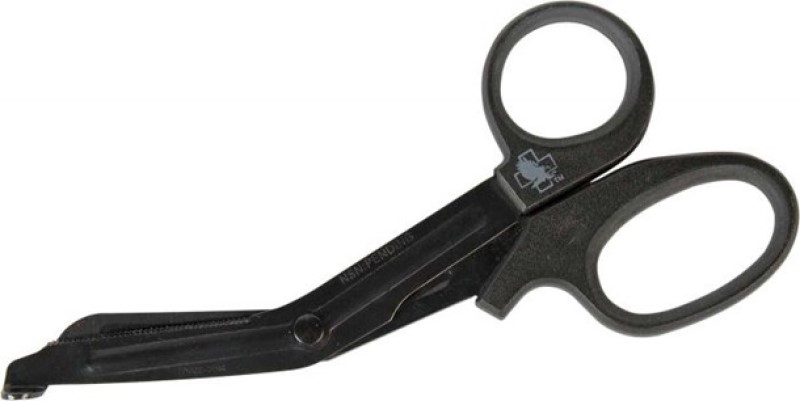
The last thing you’ll want to do is expose your wounded hunting companion to another injury by accidentally slicing their arm, chest, or leg with the sharp blade of your hunting knife. Although it may seem a frivolous expense, consider investing a few dollars on a safer and timesaving set of shears and cutters.
Another small investment that helps promote a positive outcome is including several nitrile gloves in your medical supply kit. There are a few logical reasons for stocking up on multiple pairs of nitrile gloves. Regardless of whether you’re treating someone else, or someone is treating you, bloodborne pathogen transfers are genuine, and you can reduce exposure simply by wearing a pair of nitrile gloves.
Also, in an emergency where you don’t have time to scrub up before applying proper treatment, gloves will help reduce microbiological infection at the injury site. If there happens to be a significant expanse of time before reaching proper medical care, Sepsis is always a concern. Remember that while you may have tried to treat an emergency to save a life, the dirt and grime from your hands as you administer aid could promote a potentially life-threatening condition.
Contamination from your surroundings could create a problem where the body’s own response to an infection ultimately damages tissue and can lead to amputation or death. For a few dollars’ investment, consider stocking your medical supplies with a sufficient supply of nitrile gloves in the event of an emergency.
4. Chest Seals
Most of today’s hunting crowd typically think about bringing home the results of a great hunting trip and stocking the freezer with an ample supply of meat for the season. Rarely do they concern themselves with storing ample supplies of chest seals in their medical kits. Although no one wants to experience a disastrous medical emergency such as a chest wound on a hunting trip, you need to be as prepared for the possibility as you can.

While you’ll probably not require a degree in medicine, there are a few fundamental things to consider about a chest wound. In the event of a penetrating chest injury, air builds up in the cavity between the lungs and the chest wall. Pressure build-up typically causes the lungs to compress and collapse, which immediately creates even more complications to the original chest wound and a life-threatening possibility. Chest seals help to resolve one single problem. While sealing the wound, vented chest seals allow the air to escape during an exhale and prevent additional air from rushing in.
A properly applied chest seal helps a patient already struggling to breathe properly due to an injury maintain a steady oxygen supply in their lungs. Logically, if you’ve addressed the entry point of a penetration wound, you should check for an exit wound as well. If it exists, apply a chest seal to both the entry and exit wounds to prevent a serious situation from turning dire.
5. Burn Treatment Gel
So far, this list of medical supplies for your kit has addressed more severe types of injuries, but even a slight burn on the hand, leg, neck, or face, if left untreated, can turn into a problematic situation. Something like a heated barrel, a suppressor burn, or blazing hot spent shells can cause severe and painful burns that need treatment.
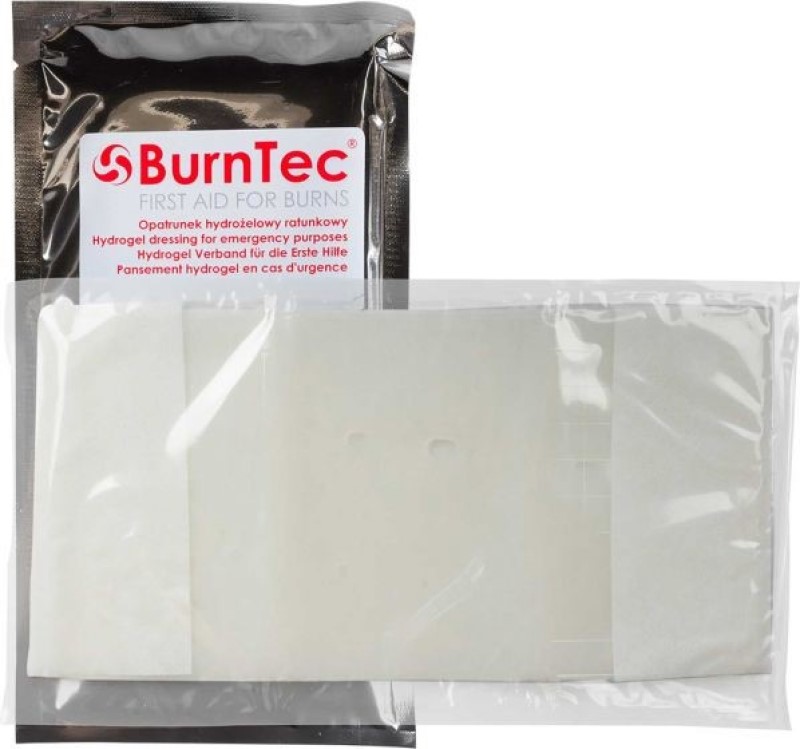
Remember that the faster you treat a burn, the better your chances of healing more quickly. Be sure to stock your medical supply kit with plenty of water-based Lidocaine gel ointments that are readily available on the market.
Portability is Key
Portability is the key to medical assistance when deep in the bush, far away from the benefits of an emergency room. Regardless of how well you’ve stocked your medical supplies, the kit sitting in the bed of your truck, or the trunk of your car won’t do you a bit of good in an emergency. While several items such as tourniquets, gauze, gloves, bandages, and dressing have been mentioned, they all will fit in small enough compartments to keep your medical kit size to a minimum.
MFASCO features a gunshot wound shooter first aid kit to consider for a little over two hundred dollars. This two-pound medical supply kit includes several quick-clot sponges, a Hyfin chest seal, a decompression needle, compression gauge, and much more in a kit that’s only eight inches long, four inches wide, and six inches high. Also, this MFASCO medical supply kit includes several of the items mentioned, including Israeli-type bandages, a pair of nitrile gloves, and a SWAT-T tourniquet.
Where and How Much
When starting your journey of stocking the right medical supplies, there will be two things to think about: how much will this all cost, and where’s the best place to find what’s needed? It’s not as daunting a task as you may think. First, you can find several local or internet retailers that offer all items mentioned and build your kit to your liking. If you’re pressed for time and need a much quicker solution, you may want to consider purchasing a pre-built trauma kit already stocked with what you’ll need.
Whichever route you pick, consider starting small and growing your gear until you’ve finally reached a point of satisfaction. Medical supply kits typically range in price from forty-five dollars for a small and yet still effective kit to as much as one hundred and fifty dollars and up for a medical trauma kit equipped with all the bells and whistles, including hemostatic dressing and tourniquets.
Learning the How
One thing to know is that no matter how much you stock your medical supply kit, understanding how and when to apply these life-saving items is just as important. As a responsible gun owner, your mission statement should be to maintain a properly stocked medical kit and know how to utilize everything in it.
Nowadays, most gun ranges and retailers either offer medical emergency treatment classes or, at the very least, can direct your attention to signing up for a course elsewhere. If classroom training isn’t your thing, consider the proliferation of online videos you can view that offer step-by-step training on how and when to apply the proper medical treatment.
Lastly, consider contacting your local EMS or fire station agencies that regularly offer various emergency medical courses you can take. As a responsible gun owner, taking these classes and combining what you learn with multiple practice sessions on your own will not only help your reaction times but give you the confidence you’ll need if an emergency should ever arise.
The Reality of it All
Many hunters on extended hunting trips don’t like to think about the harsh reality of experiencing a wound or needing to treat a fellow hunter’s severe injury. Whether frequently exposed to peril due to your profession or your type of recreational experience often puts you in harm’s way, it’s a harsh reality that you or others may at one time experience an emergency.
When stocking your medical supplies, one thing to remember is that there typically isn’t a right or wrong combination of equipment when choosing what to put in your kit. If you try to prepare for every possible circumstance and load up, your medical supply kit may end up about the size of a fifty-five-gallon oil barrel making easy transportation difficult.
A properly stocked medical emergency kit should at the very least address most of the more common emergency situations. However, as Murphy’s Law usually dictates, there may be a chance that an emergency occurs that your medical supplies can’t handle, resulting in you having to improvise. If this situation does happen, you’ll likely be glad you attended those emergency medical classes.
Regardless of how big or small, having a well-stocked portable medical supply kit and the necessary training to effectively treat a problem will make the difference when you’re the only immediate medical help available.
[Note: This was a guest post.]
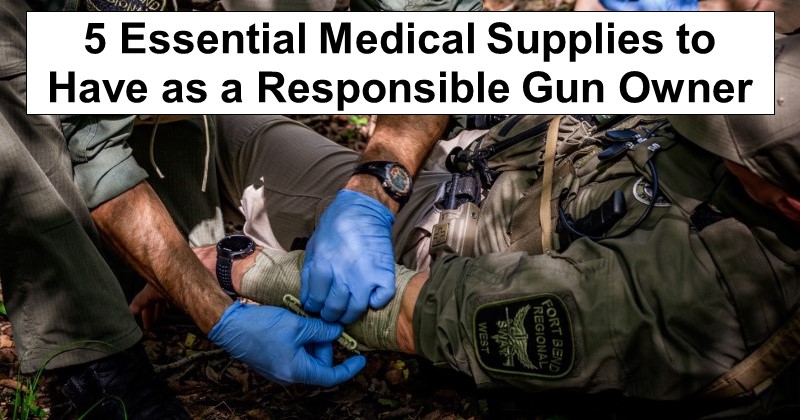
Leave a Reply